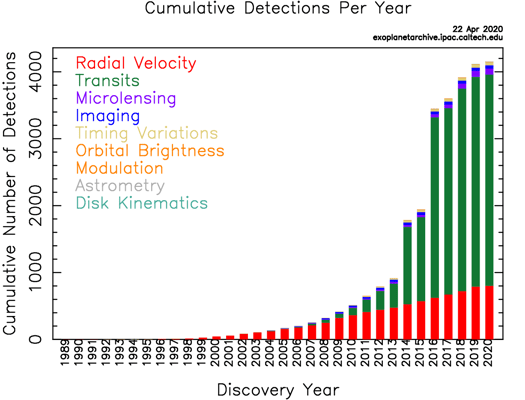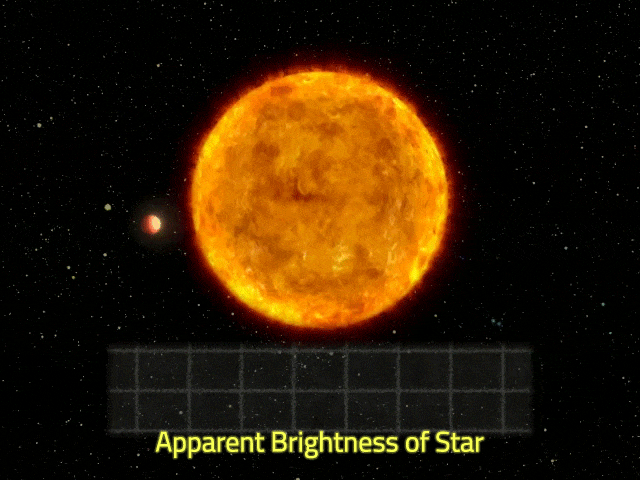Transit Photometry Method for Finding the Exoplanets

The plot of the number of planets grouped by the discovery method.
The transit method is a more promising method than the radial velocity method or Doppler spectroscopy for finding the exoplanets. Radial velocity method or Doppler spectroscopy provides information about a planet's mass and the distance from the Earth, but the transit photometric method- a method among transit methods, provides the planet's radius and its atmospheric composition.
Other transit methods include transit duration variation, transit timing, and transit imaging.
Transit photometry method basically depends on the principle of photometry, which is concerned with measuring the flux or intensity of light radiated by astronomical objects.
When a planet orbits around a star, the light from the star to the observer is blocked by the planet, at least at some point in the planet’s orbit. The phenomenon is called the transit (cross).
A solar eclipse, for example, is a transit, that occurs as the moon passes between the sun and Earth. Though this happens for a brief period of time, the star’s light gets significantly dimmer to the observer and this tiny change is enough to provide a clue to the astronomers of the presence of the planet around the star’s orbit.
To make the change in luminosity of the star during the transit relatable and mathematical, an Earth-size planet transiting a Sun-like star causes a decrease in the apparent luminosity of about 0.001% and a Jupiter-size planet of about 1%.

One space mission that used the transit method of detecting the exoplanets is the Kepler space telescope. The Kepler space telescope was launched in 2009 and completed its mission in 2018. Until its last stage, Kepler space telescope observed 530,000 stars in the Cygnus constellation and has confirmed the existence of more than 2,600 exoplanets.
Using the transit photometry method NASA has already discovered 3,169 exoplanets.
Related: Astrometry Method for Detecting Exoplanets
Once regularly measuring the luminosity of a star and detecting the periodic decrease in luminosity, the size, and length of transit can tell us a lot about the planet that's causing the transit. The idea of studying transit is much simpler; bigger planets block more light and they create deeper light curves.
Light curves are simply the graph of brightness vs. time. that demonstrates the brightness of an object such as novae, supernovae, and variable stars over a period of time.
Also, the farther away a planet is, the longer it takes to orbit and pass in front of its star. So the longer a transit event lasts, the farther away that planet is from its star.

By using the transit method we can not only detect the presence of exoplanets but also can detect the composition of a planet's atmosphere or its temperature and this can also be done by using the information of the light curves.
Scientists can analyze the colors of the light that gets in touch with the atmosphere of the planet in order to obtain valuable clues like the composition of a planet's atmosphere or its temperature. Using this method, scientists found everything from methane to water vapor on exoplanets that are considered as the lifeline in detecting the habitable exoplanets.
Another NASA’s mission on exploring the exoplanets in the wild universe is the Transiting Exoplanet Survey Satellite (TESS) that was launched on April 18, 2018, and it already confirmed the presence of 51 new exoplanets. TESS is hoping to create a catalog of thousands of exoplanet candidates using this transit photometry method.
In addition to providing an estimation of planet diameters, and the atmospheric composition of the exoplanets, this transit photometry search can operate on a massive scale.
One of the largest exoplanets ever found, called TrES-4b, has been found by using this transit method.
Advantages
-
With the combination of data from the radial velocity method of the star, the mass of the planet can be determined exactly.
-
This method is superior to the radial velocity method even in the case of large numbers of exoplanets.
-
This method also works for exoplanets that are located a few thousand light-years away from their host star.
Disadvantages
-
Transit method can only detect very large and gaseous planets from the ground and to detect Earth-like ‘rocky’ exoplanets, we need to go to space.
-
This method is only useful when the planet's orbit happens to be perfectly aligned from the astronomers' view point. Here, the probability of a planetary orbital plane being directly on the line-of-sight to a star is the ratio of the diameter of the star to the diameter of the orbit.
-
Though it can be used in multiple cases, this method has a high rate of falsely detecting the exoplanets. A 2012 study found that the rate of false positives for transits observed by the Kepler mission (that used the transit method) could be as high as 40% in single-planet systems. So, the exoplanets detected by transit method need to be verified further, typically by using typically from the radial-velocity method or orbital brightness modulation method.
